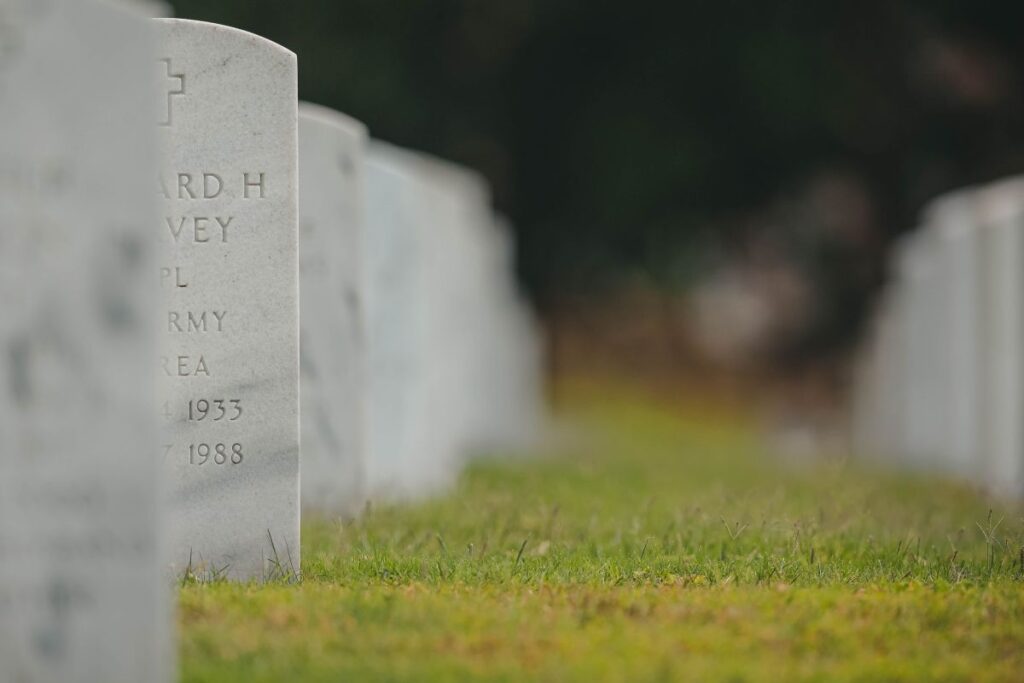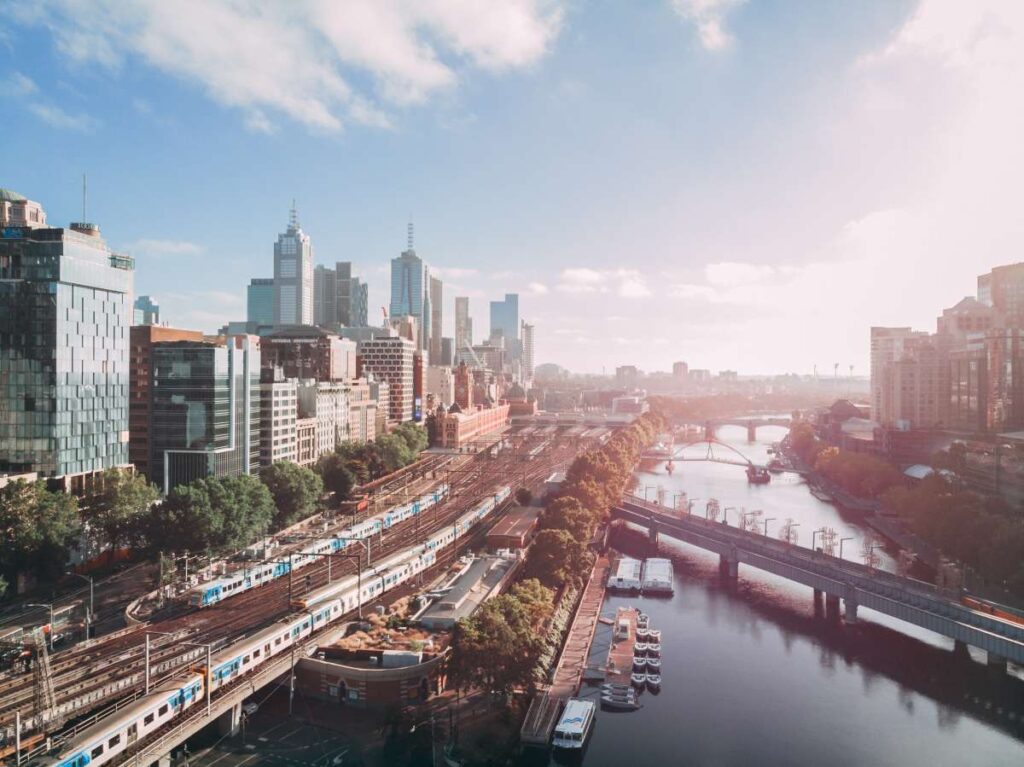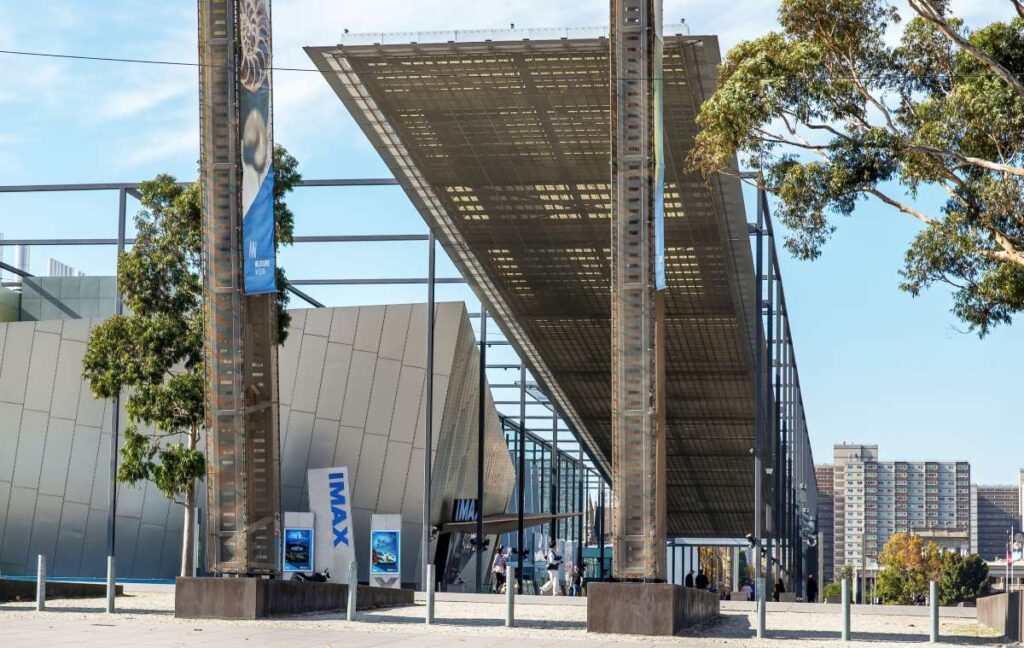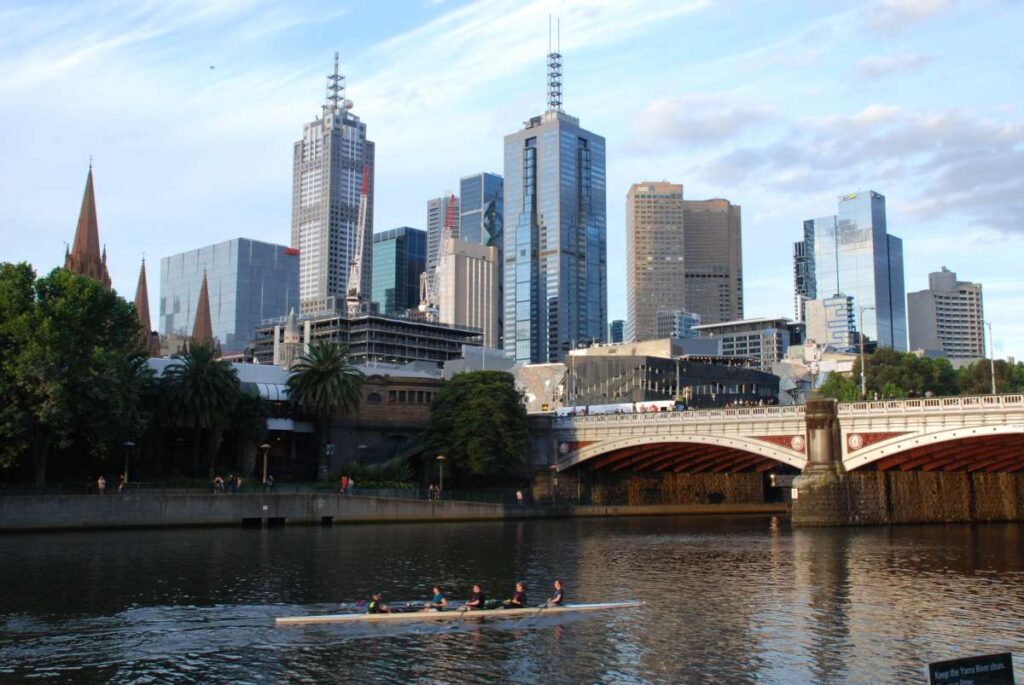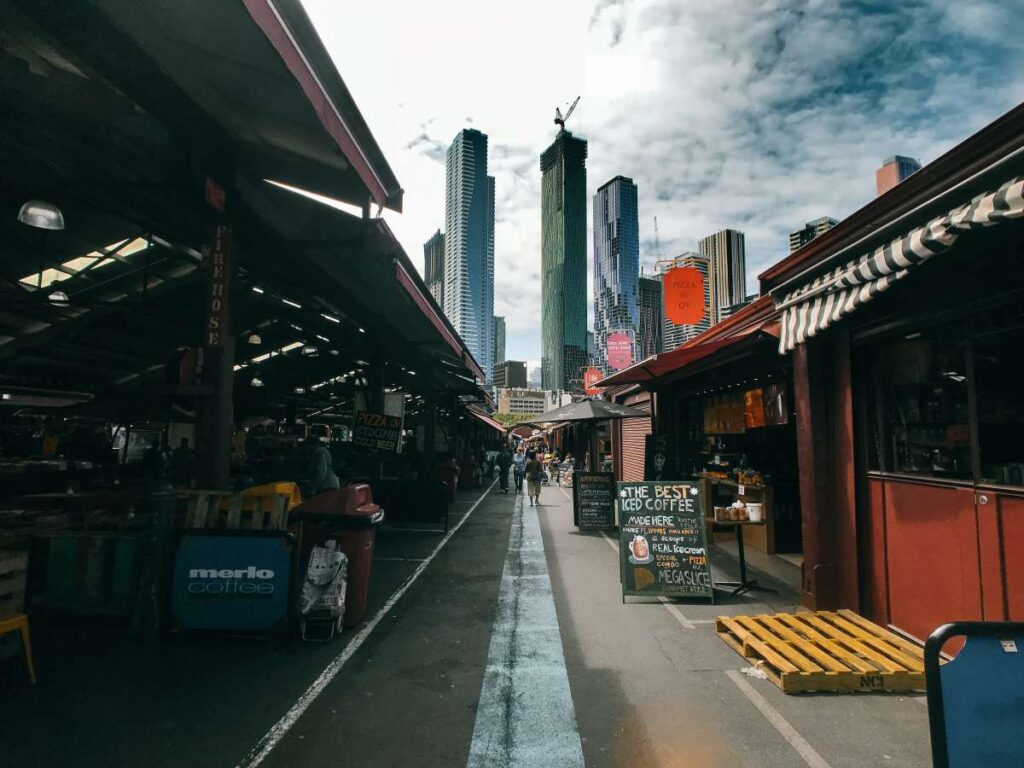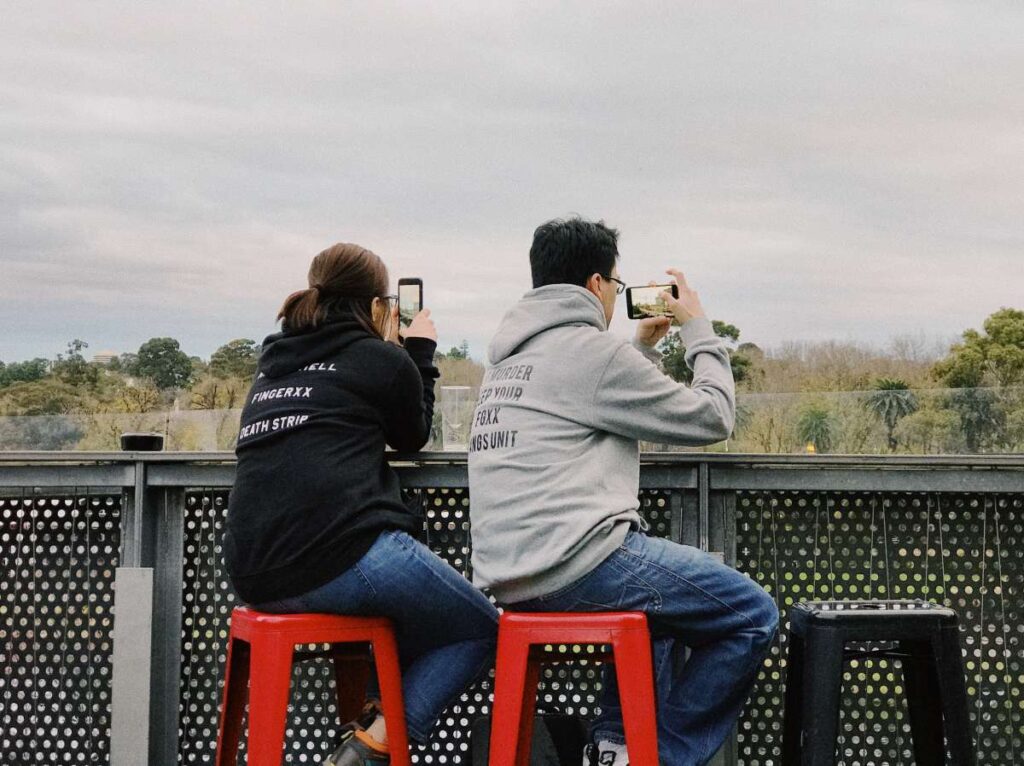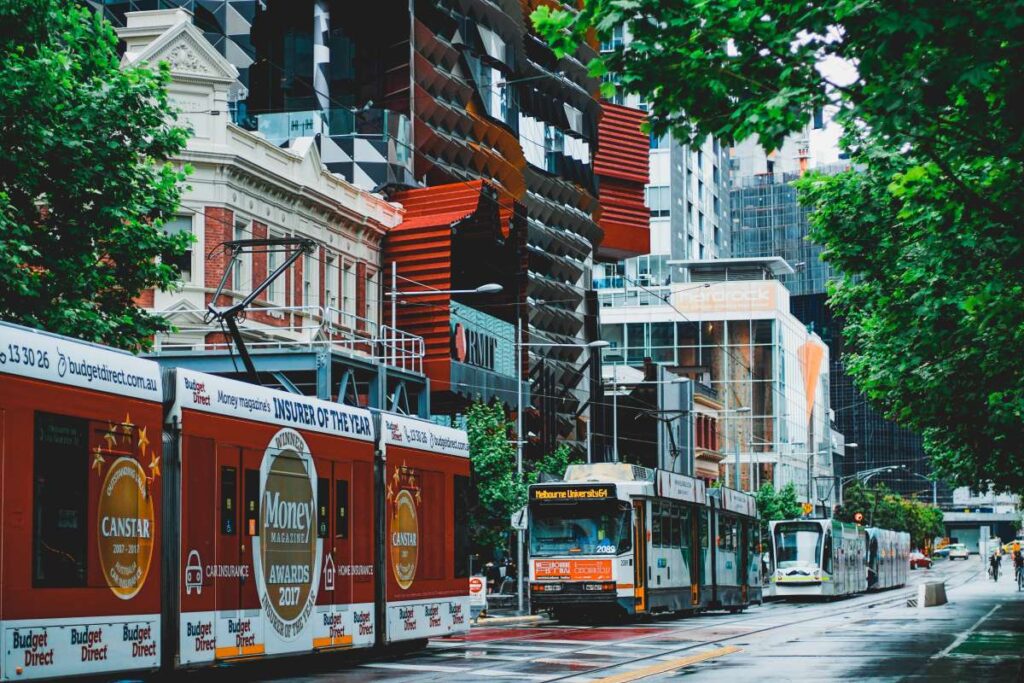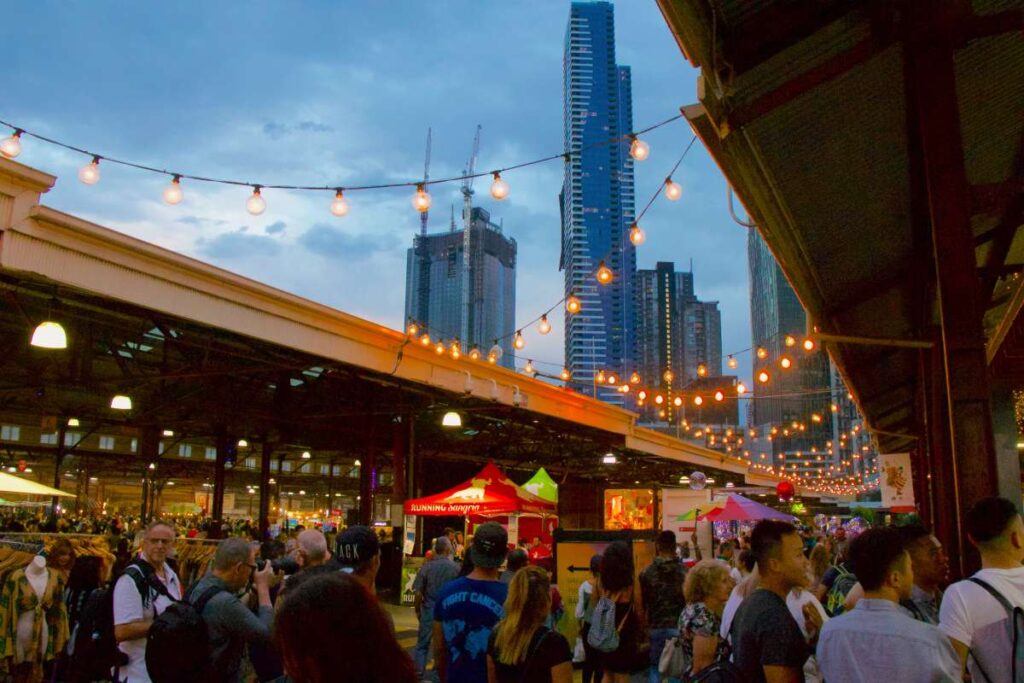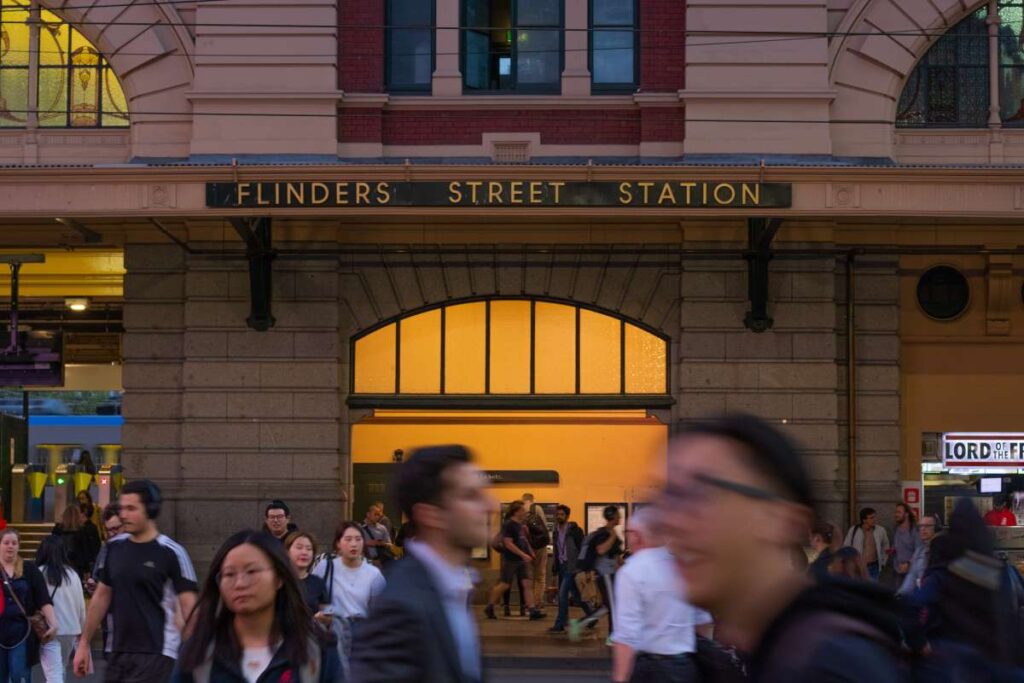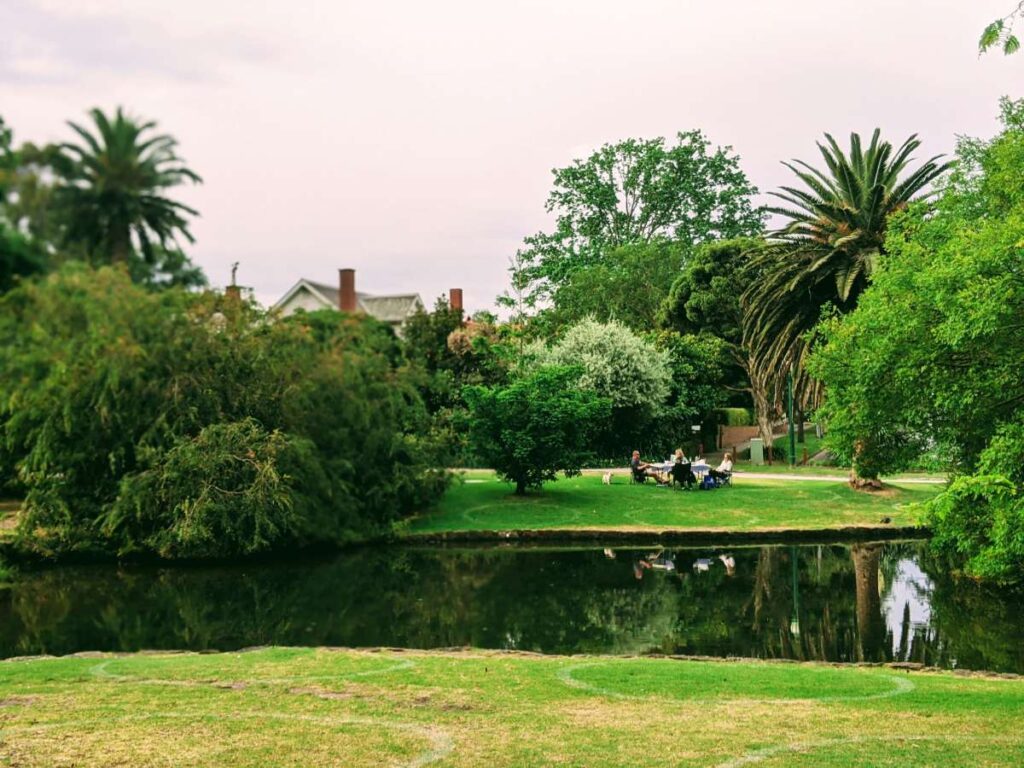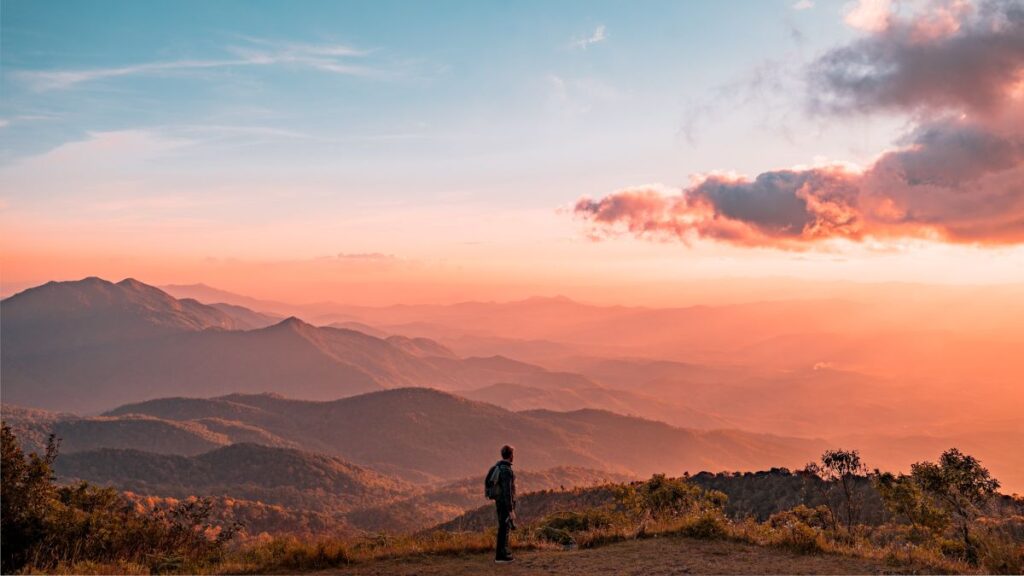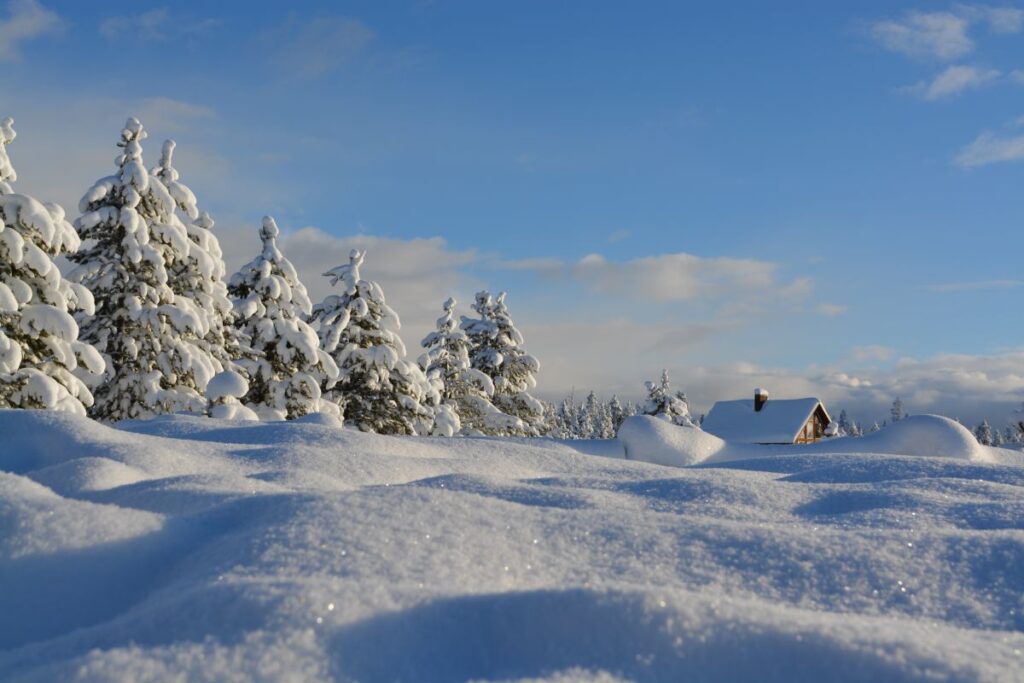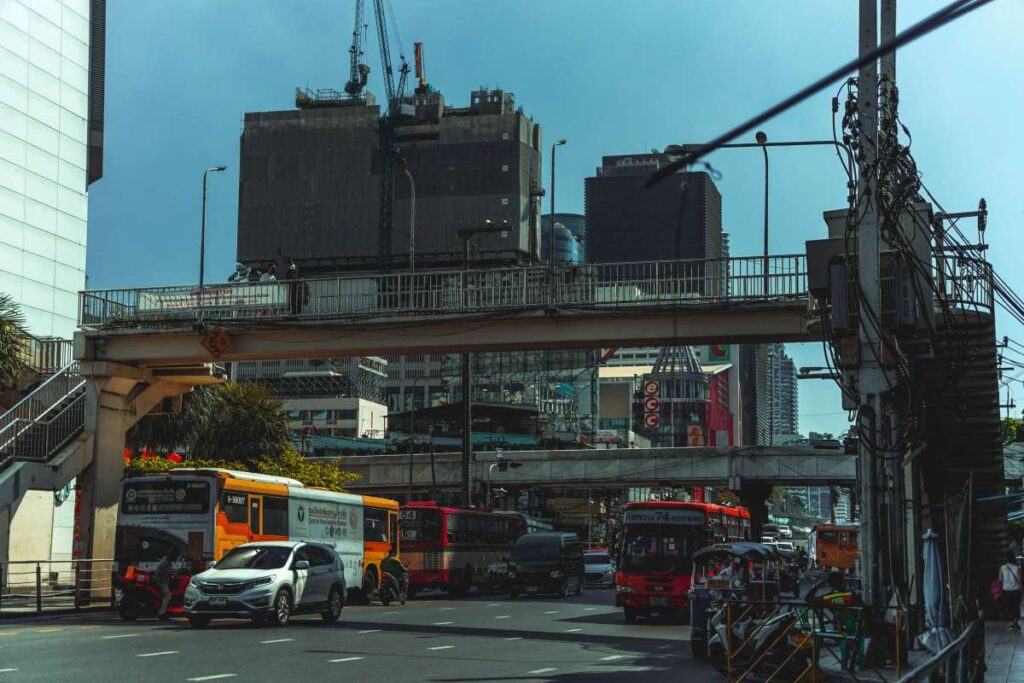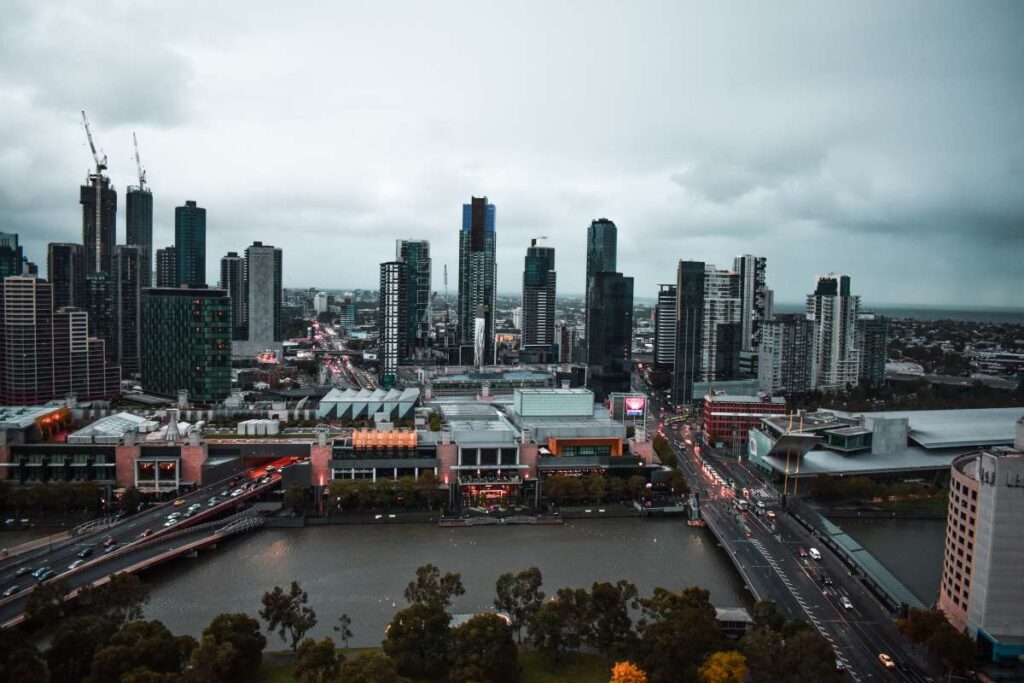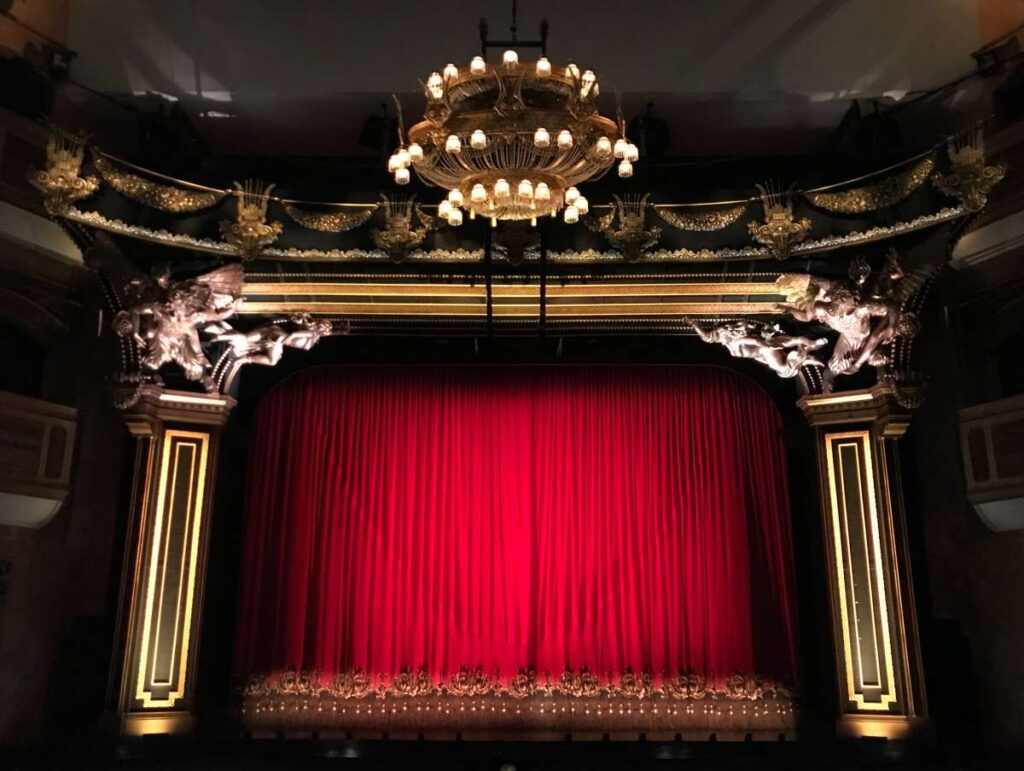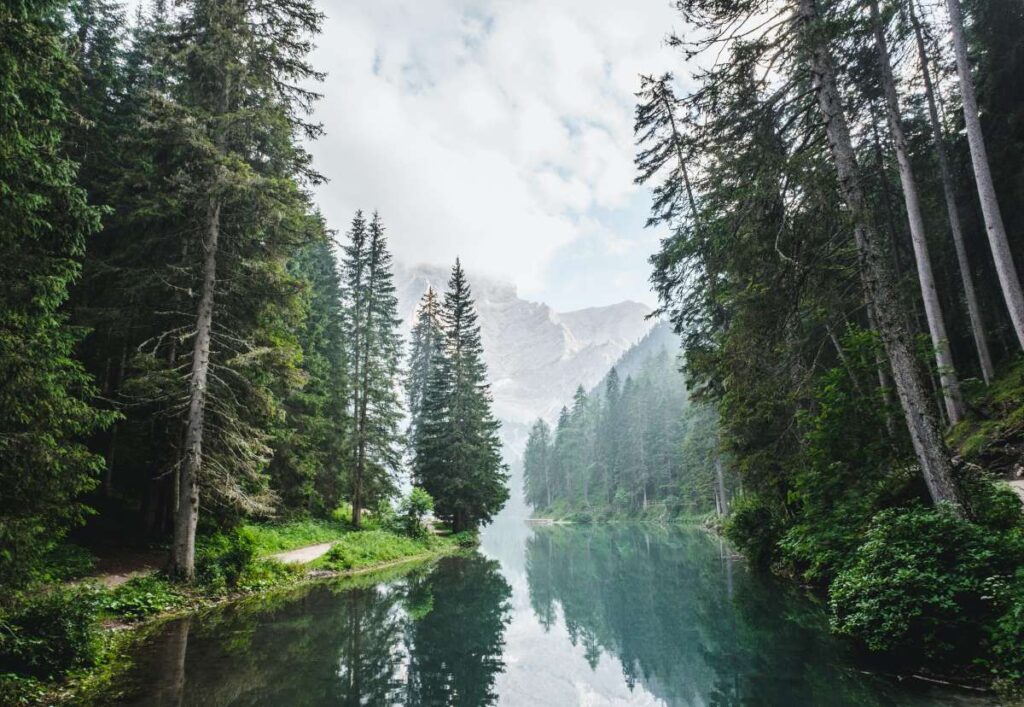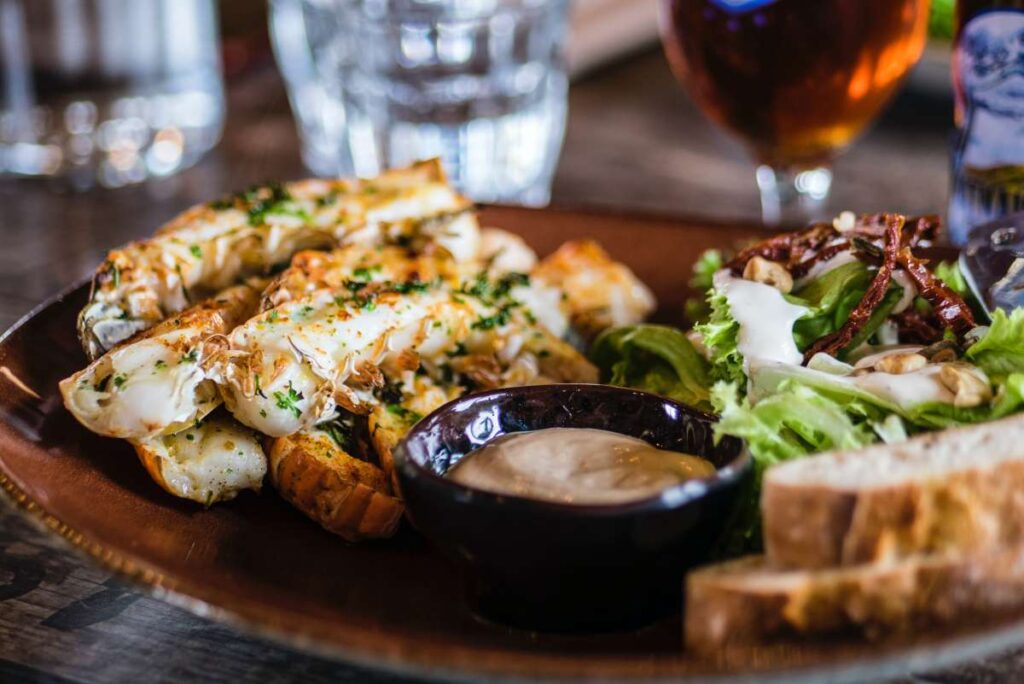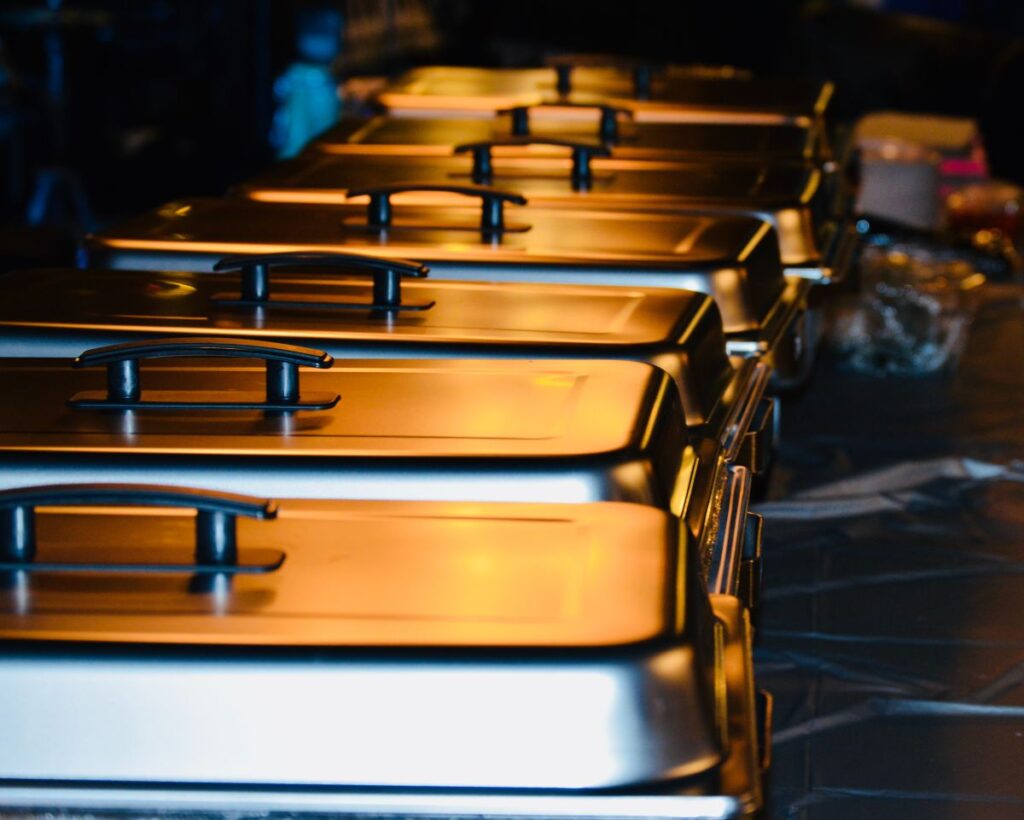It's tough to contemplate the final resting place of a loved one. Cemetery location, amenities, and available services are all important factors, but you also need to consider whether your deceased loved one is satisfied with your final decision. Even though this is a difficult period in your life, know that your dear ones will be content no matter where you choose to honour their desires. There are numerous cemeteries in the Melbourne area. One type has no features at all, whereas another has dozens.
Think about what your loved one would like, what your family thinks, what your friends have experienced, and what other customers have said online or in person before making a final decision. Then, with the support of your trusted advisors, you may rest assured that you have made the best option possible for your family member or friend by gathering as much information as possible.
Best Melbourne Cemetery Options
This book contains a complete directory of all cemeteries in Melbourne that are open but have not yet filled up. Included are descriptions of each cemetery's primary characteristics, like burial & cremated memorial alternatives and onsite amenities. To most people, going to a grave is not high on the list of things to do for fun, especially given the frightening associations that are sometimes made with such places.
These burial grounds are symbols of our past that are often forgotten. Some Melbourne cemeteries date to the late 1800s, and they often provide public tours when experts show visitors the graves of important citizens and explain their significance.
The Cemetery at Boroondara (Kew)
Kew Cemetery's first burial was in 1859, four months after the 12.5-hectare land was designated for the purpose. It wasn't until Albert Purchas was appointed to the Board five years later that garden embellishment and landscaping became priorities. Today, however, the gardens are an integral feature of the cemetery.
Boroondara (Kew) Cemetery was cared for by the Friends at Boroondara (Kew) Cemetery volunteers, who also work to raise awareness about the cemetery's historical significance. Occasionally, the group organises tours with certain themes. Tours for private groups will be considered if requested.
Cemetery on Pine Ridge, Coburg
In 1856, the Coburg Pine Ridge Cemetery opened. Although records are lacking from before 1875, it is estimated that around 52,000 people have been buried there. There have been no new burials since 1971 and, since then, only additions to preexisting graves.
Hawthorn players Walter Henry (Dick) Park, who played for the club from 1881 to 1888, and James Joseph (Jock) Coleman, who managed the team for 714 games across 38 seasons and won seven league titles between 1913 and 1949, both hail from this area.
The cemetery also served as a final resting place for creative types. Henry Webb Gibson, a sculptor who passed away in 1925, developed expertise in memorials in the years following World War One. Author and Soldier Captain Maxwell Cull wrote "At any Costs" about his time as a prisoner of war in Germany during World War I.
A few gravestones will witness tragedies, such as that of Mary and Annie Tuck, a daughter and her mother. On February 12, 1908, a train from Bendigo collided with the rear of a train from Ballarat at Sunshine Station, killing 42 persons.
Also, in 1925, Comrade Holness, a paramedic, was killed when the brick wall of a burning building collapsed on top of him.
The Coburg Cemetery Heritage now offers self-guided tours in addition to their regular guided tours. This leaflet features an illustrated map of significant burials and an in-depth account of the site's history.
Cemeteries in the City of Melbourne
Established in 1852 and used for burials the following year, this Melbourne General Cemetery was the first cemetery in Victoria to be laid out like a park. Religious buildings, lodges, available options, churches, and natural spaces with trees and bushes are separated by winding and crossing paths.
The 43-hectare cemetery has seen over 300,000 graves. Here rest Brooke brothers Wills, Ministers, the Bunurung Aboriginal Regional Leader Derrimut, novelist Alexander Clarke, and the opera singer Friedrich Blake, better known by his stage name, Fedramp, and the ghost is claimed to haunt the Queen Theatre.
All year long, on the last Friday of every spring, summer, and fall, the Augusta General Cemetery opens its gates for guided night tours.
Spring Tour in Feb., Waxing Moon Travel in January, and Death Tour on October 31 are all examples of such holiday-themed excursions. In addition, groups can request special tours at their request.
The tour guide will explain the historical and cultural significance and point out the graves of notable Melburnians from throughout the cemetery.

Cemetery District of Cheltenham and Surrounding Area
In 1864, two cemeteries were created in the suburb of Cheltenham: the Cheltenham Frontier Hospital (also known as Mordialloc) and the Southwest Moorabbin National Cemetery. A portion of the cemetery had to be removed in the 1880s to build a railway to Mordialloc. The cemetery filled up during the 1920s, so in 1933 they opened up Cotswold Park. Friends give regular guided tours of both monuments at Cheltenham County Graveyard Inc. We also provide private tours for larger groups. Typically, the tours last for 90 minutes, with a 5-minute break in the middle for refreshments.
FAQs Best Melbourne Cemeteries
The construction of three mausolea from the 1990s has given the cemetery a new life. The cemetery has a substantial number of notable interments, which is reflective of the fact that Melbourne was considered, in many ways, to be the premier city of the Australian colonies from the mid-nineteenth century until the early twentieth century.
Organising a memorial is the last thing we do for your dearly departed. Melbourne Headstones will work with you to help design and cater a memorial suitable to fit all your requirements and create a lasting tribute that reflects a very special life. How You Can Get A Quote Or Get In Contact With Us
Opened in 1853, the historic and iconic Melbourne General Cemetery is regarded as one of Australia’s most important cemeteries. It was the first cemetery in Victoria to be designed as a public park, with curved pathways, trees and shrubs, gate lodges and rest pavilions.
Fawkner Memorial Park spans over 113 hectares. As one of Australia's largest cemeteries, we offer many burial options, memorials, cremation and private mausoleums.
The Old Melbourne Cemetery
Take a visit to Melbourne's popular and historic Queen Victoria (QV) market. The site is also Melbourne's first major cemetery – the Old Melbourne Cemetery 1837-1922 – now located largely under the market car park.
Guided tours of the Springvale Botanical Cemetery
In 1901, the Springvale Botanical Graveyard opened to the public. More than 29,000 rose plants are scattered throughout the site's 168 hectares of established gardens. This is why there are tours focused on both history and landscaping. In 1878, the Victorian government made the acquisition, and on May 10, 1887, they officially set aside the land for use as a cemetery.
The rivalry between local politicians and the city council delayed the cemetery's construction. Established in 1901 as Necropolis Shared daily, the first burial there was a child named Clarence Reardon on March 20, 1902. Unlike any other cemetery, Springvale Botanical Cemetery has a brand new formal layout inspired by the Union Jack.
Though the cemetery's structures and rail lines have been dismantled, the historic core has been preserved, including all burials from the 20th century and parts of the original plantings, including bunya-bunya pine trees, palms, and gums.
When thinking about cremation in Australia, it's crucial to remember this cemetery. The 1930s and 1940s saw the development of the Boyd cremation and chapel, which contributed to the growing prominence of the cemetery. In 1970, with its upgrades, Australia's crematorium had the most advanced facilities in the world.
The modern cremation and string of chapels at Springvale make it a cemetery of international renown. It also has some 80,000 trees and the largest tribute rose gardens in Australia, earning it a reputation as a significant botanical area. As of right now, the total area of the site is 169 ha (422 acres). The number of burials is anticipated to be 162,000, while the number of cremations is 473,000.
Tours of the St. Kilda Cemetery
When it first opened in 1855, the St. Kilda Cemetery was peaceful for mourners. This Melbourne cemetery is one of the smaller ones, measuring only 9 hectares.
Monumental Park of Bunurong
London Bristol & Regional Monuments Association created Bruton State Park in 1995. That year, work began on major fortifications and landscaping, the administration building was constructed, and roads were created. In addition, we installed a complex watering system for the Genesis Gardens and the Le Page Lawn.
The Honorable. Rob Clements, Minister of Health, presided over the memorial park's inauguration ceremony on August 29, 1996, which marked the eighth anniversary of the first burial there, which had taken place on February 8. Since then, the 100 hectares (247 acres) of land there have hosted almost 30 thousand graves and ashes. , The incinerator and the Pietà Cemetery plaza were built in 1997. In its first year of operation, the new crematorium handled 407 funerals; the following year, it handled 1,350.
In 1999, the Sturdee Memory Gardens was built to honour veterans, and in 2000, the Fushou Yuan neighbourhood was formed to serve the area's Asian residents. On May 17, 2008, the Greek Orthodox Church of the Revival of Saint Ezekiel was officially founded by the Ministry of Health and Metropolitan Ezekiel.
On May 12, 2012, His Holiness, Archdiocese Stylianos of Sydney, officially launched and blessed the church, and burials in the surrounding area are now up for sale.
Cemetery, Brighton General
One of Melbourne's oldest and most revered burial grounds is the Brighton General Cemetery. As the area south of the Yarra River continued to develop in population, 11.75 metres (29 miles) of land were set aside in 1853 for use as a cemetery. In December 1854, the first members were appointed here to Cemetery Trust.
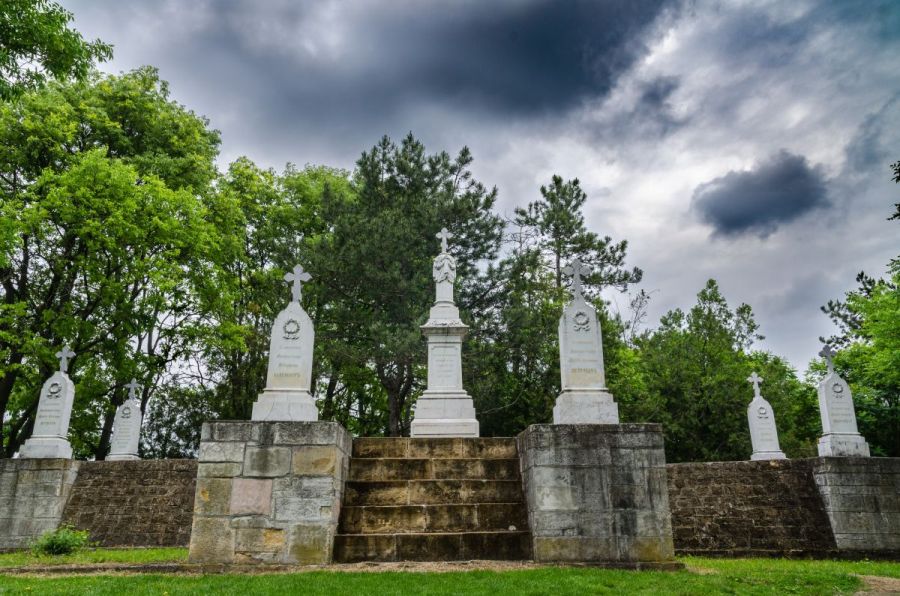
This Brighton General Graveyard has park-like features such as curved pathways, landscaping, and a gate lodge, and it was created in the garden style. Johanna Manson, a 10-month-old, was buried in the Wesleyan cemetery on October 14, 1855.
Over 70,000 people have been laid to rest since then. The cemetery's brick pathways and footpaths totalled 112.6 metres long, and the fence separating it was 1.6 meters (one mile) in height (70 miles).
The Church of England, Roman Catholic, Protestant, Wesleyan, Independent, Baptist, and Other Denominations each had its designated territory in the early years. However, it wasn't until much later that the Jewish quarter was built.
First constructed in 1892 as a private home, the lodge expanded to include an office. Brighton Public Graveyard was the busiest in southeast Melbourne until the Springvale Burial chamber was established in 1902. The 1920s were the Brighton General Cemetery's busiest, with an annual average of 1,350 burials. Beginning in the 1930s, cremation started to gain popularity. In 1958, a secular cemetery with a grassy lawn was established. Between 1854 and 2007, the Worthing General Cemetery Governors were responsible for the cemetery's maintenance and upkeep.
In April 2007, the Trust was disbanded, and the Cheltenham and Area Cemeteries Trust assumed its cemetery management responsibilities. On March 1 2010, the Southern Metropolis Cemeteries Trust was officially formed when the Cheltenham and Local Graveyard Trust and the Trustee of the Crypt Levels helped unite under the law.
Cemetery for the Town of Dandenong
Five prominent locals founded Dandenong Community Cemetery; the property was heavily forested with massive red gums and partially swampy. The Russian Orthodox, the Druze, the Church of Christ, and the Non-Sectarian categories followed later.
It is thought that a part-time working Indigenous Australian was the first person to be laid to rest in the Dandenong Community Cemetery. However, there are no surviving records from the early years, and not even the location of the earliest graves is known. The tomb of Benjamin Gruber, which died on January 28, 1858, at the age of 73, is marked by one of the oldest headstones, as is the grave the Denis Neville, who died on November 17, 1860.
A mysterious occurrence took place in the year 1871. The Land Board approved John's request for 2 hectares (4 hectares) of graveyard land. As was customary, the land transaction didn't appear to have been announced in the local press. By July 1875, however, the landowner had constructed a brick farmhouse and fenced the area without any pushback from the neighbours.
In 1875, a new group of people took over as trustees; previously, the All had been part of the Camberwell Improvements Society, which had been established in 1863 and had been in charge of maintaining and bettering the cemetery. The cemetery was split up into different faith divisions in the 1880s, and after that point, records began to be kept more precisely.
The cemetery was established in 1929 and featured a brick building and several notable trees, including five California trees, two oaks, 13 mature tree individuals, and four floral trees.
For pragmatic reasons, the Gippsland Shire Municipality took over in 1945. After the dissolution of the Yarra District Cemeteries Trust (DPCT) in 2003, contract management of the cemetery was taken up by the Necropolis Shared daily. The Crypt Springvale took over maintenance of the cemetery in December 2007. Dandenong Public Graveyard is a historic cemetery distinguished by its mature gum trees and convenient location.
The tranquilly of the lawn and gardens makes it an ideal spot for loved ones to spend time together and think about the past and future. Many elaborately designed monuments dot the grounds, highlighting a different period in the cemetery's past.
Memorial Park in Cheltenham
The initial 21.9-acre plot was developed in the 1930s by employing local unemployed men at the cost of $8,666.
FC Chef's plan featured a striking contrast between the curved shape of the Pioneer Graveyard and the robust gridiron organisation of roads & pathways. Victoria City Council member and forward-thinking urban designer Frank Enlarged spleen designed the office building.
Considering it opened in 1992, almost 55,000 people have been laid to rest there. The initial 20 hectares (50 acres) were expanded starting in 1944 and continuing until 1952. Wall niche memorials and the first ou past lawn interment area opened in 1961.
An onsite crematorium was always intended to be a component of Cheltenham Memorial Park's original blueprints. However, crypt Springvale was denied permission because locals were against it, and it couldn't handle the volume.
Since the initial mausoleum's construction in 1996, five more have been added to Cheltenham Cemetery Park.
Gloucester Memorial, which opened in 1933, is a unique communal cemetery with majestic palms, manicured gardens, sprawling lawns, and magnificent pavilions.
The tranquil grounds, designed in the traditional manner of a garden, provide an ideal setting for introspective family gatherings. Among the 50 landscaped acres (20 hectares) of land, numerous monuments speak to the cemetery's illustrious past.
With the help of a dedicated crew, the groomed gardens can be enjoyed all year as a quiet spot for contemplation.
Southern Metropolis Cemetery Trustees (SMCT) are responsible for the operations at Cheltenham Park Area and report directly to a Victorian Health Minister to honour this promise and Memorial across many generations.
In whatever way members of the community want to remember and celebrate the lives of their loved ones, SMCT will be there to lend a hand.
Cemeteries of Burwood
Burwood Cemetery, founded in 1858 and formerly known as Nunawading General Cemetery, served as a central gathering place for mourners until the 1980s. Unfortunately, this decade saw a final closure of available gravesites.
Borough council Cemetery is a historical, artistic, and social treasure for the City of Whitehorse, marking the site of the original Burwood neighbourhood. Learn more about the fascinating past of Burwood Cemetery and the people who have been laid to rest there by visiting our History and also Heritage Portal.
Learn More About Lilydale Park Area
This will Memorial has a longstanding experience serving the needs of the local community, having begun as a member of the Lilydale Burial Trust in 1863.
Many services are available at Lilydale Park Area, including mausoleums, memorials, a chapel, event spaces, burial plots, and a crematorium.
Located in Yarra Glen, Victoria, Australia
The property's open aspect, which catches the vastness of the sky & mountains and vistas of the lovely Yarra Valley, makes the place so appealing. Located in a picturesque setting amongst the surrounding mountain ranges, this cemetery holds great significance in the community as the final resting place for many of the area's pioneers. At the gates of Yarra Glen Cemetery is the beautiful native environment of Yering Memorial Garden, where cremated remains can be interred in peace.
Memorial Park of Altona
Unlike the conventional monumental cemetery, this park in the mainly industrial west city of Melbourne was opened in 1961 as a modern cemetery. It contains beautifully groomed lawns and huge memorial gardens. Altona Memorial Park has two chapels and a crematorium that have recently been renovated in addition to the event spaces.
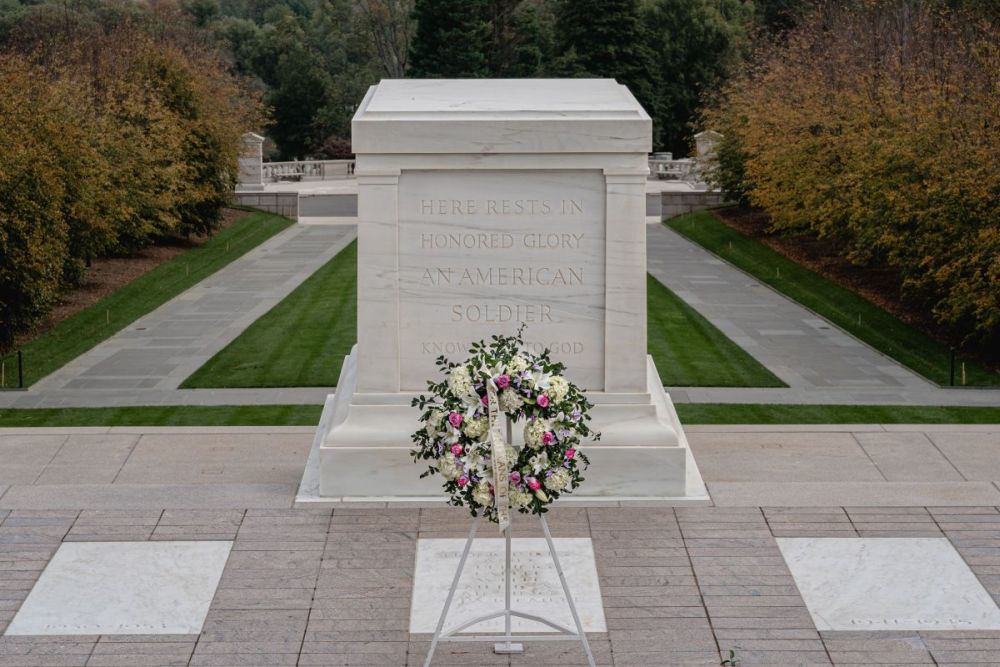
In addition to reflecting the working-class past of Melbourne's west, the cemetery is also home to the final resting place of "Mr Football," Ted Whitten. The regional office is located at Altona Memorial Park for cemeteries in the western suburbs, owned and operated by GMCT.
Sacred Grounds of Keilor
For almost 150 years, Keilor Cemetery has accommodated the changing demands of Keilor's ethnic community. The number of pioneer burials commemorates the location on the trail to the gold fields. A Wwi Apple tree planted from acorns revived after Great War One may also be found in Keilor Cemetery. It is a significant memorial for the people of that area to remember the lives lost in that war.
GMCT started opening up 5065 graves as in Ely Court expansion in 2017. As a result, this will be useful in meeting the requirements of the neighbourhood in the future.
St Kilda Memorial is one of our busiest community cemeteries, with various burial and cremated commemoration options, a florist on-site, and a soon-to-be-expanded mausoleum with a Gallery of the Saints.
You will be given the same amount of consideration regardless of how much or little time you have to decide. Since the death of a loved one is often sudden and unexpected, the decision must be made quickly. Nothing can change these situations, but you may minimise their impact on your health by keeping a positive attitude and being resilient.
Conclusion
The location, facilities, and services a cemetery provides should all be considered when planning a loved one's burial site. Melbourne is home to many cemeteries, some of which date back to the late 1800s and are open for tours. Volunteers have cared for the Boroondara (Kew) Cemetery since it opened in 1859. Established in 1856, the Coburg Pine Ridge Cemetery is currently home to the remains of around 52,000 people. The Pine Ridge Cemetery in Coburg opened its gates in 1875 and has since been visited by tens of thousands of mourners.
Walter Henry (Dick) Park, who played for Hawthorn from 1913 to 1949, and James Joseph (Jock) Coleman, who managed the team for 714 games over 38 seasons and won seven league titles, are locals. The Coburg Cemetery Heritage has expanded its services to include guided and self-guided tours of the cemetery. There are more than 300,000 people buried in the 43-hectare cemetery, including the Wills Brooke brothers, ministers, the Bunurung Aboriginal Regional Leader Derrimut, novelist Alexander Clarke, and opera singer Friedrich Blake. In addition, Augusta General Cemetery hosts free, guided night tours three times a year, on the last Friday of each spring, summer, and fall. The tour guide will overview the cemetery's history and culture before stopping at the graves of important Melburnians and describing their lives and contributions to the city.
In 1864, the area of Cheltenham saw the establishment of not one but two cemeteries: the Cheltenham Frontier Hospital (also known as Mordialloc) Cemetery and the Southwest Moorabbin National Cemetery. The site for the Springvale Botanical Graveyard was acquired by the Victorian government in 1878 and was first opened to the public in 1901. All 20th-century burials and some of the original landscaping have been conserved. However, the cemetery's buildings and rail lines have been removed. In addition, Boyd crematorium and chapel were built in the 1930s and 1940s, respectively, adding to the cemetery's rising notoriety. Springvale is a world-famous cemetery with Australia's largest tribute rose gardens, 80,000 trees, and a modern crematory.
Extending over a total of 169 ha, the property is sizable enough to accommodate a variety of activities (422 acres). About 162,000 people are expected to be laid to rest, while only 473 people will be cremated. The London Bristol & Regional Monuments Association established Bruton State Park in 1995. Honesty and respect. On the eighth anniversary of the first burial in the memorial park—August 29, 1996—Rob Clements, Minister of Health, presided over the opening ceremony. Since then, about 30,000 bodies and ashes have been interred on the 100 ha (247 acres) of land. In addition, the Fushou Yuan neighbourhood was established to accommodate the area's Asian people better, while 1997 also saw the construction of the incinerator and the Pietà Cemetery plaza.
The Greek Orthodox Church of the Revival of Saint Ezekiel was established in 2008 under the auspices of the Ministry of Health and Metropolitan Ezekiel. In 2012, the church was inaugurated and blessed by His Holiness Archbishop Stylianos of Sydney, and burial plots in the neighbourhood are available for sale. Brighton General Cemetery In 1853, land in Melbourne was designated as the Brighton General Cemetery, which is now one of the city's oldest and most revered burial cemeteries. The cemetery was designed in a garden style, with curved paths, greenery, and a gate lodge, making it feel more like a park. Since the burial of Johanna Manson, a 10-month-old, in the Wesleyan cemetery on October 14, 1855, more than 70,000 souls have been laid to rest there. The whole length of the cemetery's brick walkways is 112.6 metres, and the fence separating it is 1.6 metres high (one mile) (70 miles). In the beginning, there was a specific area for each major religious group, including the Church of England, the Roman Catholic Church, the Protestants, the Wesleyans, the Independents, the Baptists, and the Baptists of other denominations.
Before the Springvale Burial Vault opened in 1902, the Brighton Public Graveyard was southeast Melbourne's most popular burial ground. A grassy secular cemetery was founded in 1958. The Worthing General Cemetery Governors were in charge of the cemetery from 1854 and 2007. The Trust was dissolved in April 2007, and its cemetery management responsibilities were taken over by the Cheltenham and Area Cemeteries Trust. In 2010, with legal assistance, the Southern Metropolis Cemetery Trust and the Trustee of the Crypt Levels merged.
In the 1880s, the cemetery was partitioned into sections based on different religions, and at that moment, records began to be preserved. One of the oldest headstones is at the cemetery of Benjamin Gruber, who passed away on January 28, 1858, at the age of 73. Another is at the grave of Denis Neville, who passed away on November 17, 1860. The Property Board granted John his request for 2 ha (4 ha) of cemetery land in 1871, but by that time, the landowner had already built a brick farmhouse and fenced off the area with no opposition from the surrounding residents. A new board of trustees was established in 1875. In 1929, a brick building and prominent trees such as five California trees, two oaks, 13 mature tree individuals, and four floral trees were added to the cemetery's grounds.
In 1945, the Gippsland Shire Municipality took ownership, and the Necropolis Shared took over contract management of the cemetery. The Dandenong Public Graveyard is a well-established cemetery known for its historical significance. For the low price of $8,666, local unemployed men were used to construct Cheltenham Memorial Park in the 1930s. Cheltenham Cemetery Park has had five more burials since 1996. The gorgeous palm trees, well-maintained gardens, expansive lawns, and magnificent pavilions at Gloucester Memorial make it stand out from other cemeteries.
The serene grounds are perfect for reflective family get-togethers. A hardworking team ensures that the manicured grounds are beautiful and inviting throughout the year. To aid community members in honouring and reflecting upon the lives of their departed loved ones, SMCT will be present. Established in 1858 as Nunawading General Cemetery, Burwood Cemetery was a hub for mourners until the 1980s. The Borough Council Cemetery, located in the old Burwood neighbourhood, is a cultural, aesthetic, and historical gem for the City of Whitehorse.
Lilydale Park Area has served the local community for decades by offering mausoleums, memorials, a chapel, event spaces, burial plots, and cremation. Yarra Glen Cemetery in Victoria, Australia, is significant because it is the final resting place of many of the area's pioneers. Popular Melbourne community cemeteries include Yarra Glen, Memorial Park, Keilor, and St. Kilda. Yering Memorial Garden in Yarra Glen Cemetery provides a natural setting for the burial of cremated remains. Ted Whitten was laid to rest in Altona Memorial Park, which features two chapels and a crematorium. Keilor Cemetery has adapted to the needs of the area's diverse ethnic communities, and a Wwi Apple tree, replanted from Great War-era acorns, stands as a poignant reminder of the sacrifices made by locals during that conflict. The Ely Court expansion, which GMCT began opening up 5065 graves in 2017. This will help to accommodate the needs of the area in the future. Having a positive outlook and showing resilience when deciding to bury a loved one is crucial.
Content Summary
- Thinking about where a loved one will be laid to rest is difficult.
- When choosing a cemetery, it's crucial to think about the needs of your deceased loved one as well as the needs of the community at large.
- Know that your loved ones will be happy wherever you decide to go to satisfy their wishes, even though this is a trying time in your life.
- Numerous cemeteries can be found in and around Melbourne.
- The other has dozens of distinguishing characteristics, while the former has none.
- Before making a purchase, consider about what the recipient of your gift would like, what your family and friends think, what your friends have experienced, and what other customers have stated online or in person.
- Once you've gathered all the information you can and discussed it with your closest friends and family, you can make the greatest decision for your loved one.
- This book is a comprehensive guide of all of Melbourne's public cemeteries that are currently accepting new burials.
- Main features, such as burial and cremation memorial options and onsite amenities, are described for each cemetery.
- Most people don't consider visiting a grave to be an enjoyable activity, especially considering the negative connotations that are sometimes attached to cemeteries.
- These graveyards are relics of a bygone era that are all too easily forgotten.
- A number of Melbourne cemeteries date back to the late 1800s, and visitors can take guided tours to see the graves of notable locals and learn about the history of the cemetery.
- In 1859, four months after 12.5 acres of land were set aside for the cemetery, the first burial took place at the Cemetery at Boroondara (Kew).
- These days, however, the gardens form an essential part of the cemetery.
- Friends at Boroondara (Kew) Cemetery is a group of volunteers dedicated to maintaining the cemetery and educating the public about its historical value.
- The organisation occasionally plans themed tours.
- If you have a large enough private group, we can consider giving you a tour.
- Artists and other creative people were also laid to rest there.
- In the years following World War One, the late sculptor Henry Webb Gibson became a specialist in creating memorials.
- The deaths of some people, like Mary and Annie Tuck, daughter and mother, will be memorialised on gravestones.
- Fourty-two people were killed when a train travelling from Bendigo crashed into the back of a train travelling from Ballarat at Sunshine Station on February 12, 1908.
- In 1925, a paramedic named Comrade Holness was killed when a brick wall of a burning building collapsed on top of him.
- The Coburg Cemetery Heritage has expanded their services to include both guided and self-guided tours of the cemetery.
- Includes an in-depth history of the site as well as an illustrated map of notable burials.
- When it opened for burials in 1853 after being established in 1852, Melbourne General Cemetery was the first cemetery in Victoria to be designed in a park-like fashion.
- Weaving and crisscrossing paths separate places of worship, lodges, hotels, churches, and greenery like trees and bushes.
- More than 300,000 people have been buried at the 43-hectare cemetery.
- According to legend, opera singer Friedrich Blake, better known by his stage name, Fedramp, who is buried nearby, haunts the Queen Theatre. Also buried there are the Brooke brothers Wills, ministers, the regional leader of the Bunurung Aboriginal people, Derrimut, novelist Alexander Clarke, and a ghost.
- Augusta General Cemetery hosts free, guided night tours three times a year, on the last Friday of each of spring, summer, and fall.
- Such trips include the Spring Tour in February, the Waxing Moon Travel in January, and the Death Tour on October 31.
- As an added perk, customised trips can be arranged for groups upon request.
- In 1864, the area of Cheltenham saw the establishment of not one but two cemeteries: the Cheltenham Frontier Hospital (also known as Mordialloc) Cemetery and the Southwest Moorabbin National Cemetery.
- In the 1880s, when construction of a railway to Mordialloc began, a section of the cemetery had to be relocated.
- In 1933, as the cemetery was reaching capacity, Cotswold Park was made available.
- Tours of the Cheltenham County Graveyard Inc., which include stops at both monuments, are given on a regular basis by friends of the cemetery. To accommodate larger groups, we also offer private tours.
- The typical duration of a tour is 90 minutes, with a 5-minute break in the middle for refreshments.
- The site's 168 acres of established gardens are home to more than 29,000 rose plants.
- Which is why you'll find excursions that highlight both architecture and nature.
- The state government of Victoria purchased the site in 1878, and on May 10, 1887, it was officially designated as a cemetery.
- City council and local political rivalries slowed down the cemetery's development.
- Originally called Necropolis Shared daily, it was established in 1901, and on March 20, 1902, a young boy named Clarence Reardon was buried there.
- The new formal design of Springvale Botanical Cemetery was influenced by the Union Jack flag, making it stand out from neighbouring cemeteries.
- All 20th century burials and a portion of the original vegetation, including bunya-bunya pine trees, palms, and gums, have been retained, despite the fact that the cemetery's structures and rail lines have been removed.
- The importance of this cemetery cannot be overstated when considering cremation options in Australia.
- Boyd crematorium and chapel were built in the 1930s and 1940s, respectively, adding to the cemetery's rising notoriety at the time.
- Upgrades made to the Australian cremation in the 1970s made it the most technologically advanced of its kind.
- Springvale is a world-famous cemetery because of its cutting-edge cremation services and long line of chapels.
- In addition to being a notable botanical region, it is home to over 80,000 trees and Australia's largest tribute rose gardens.
- In 1995, the London Bristol & Regional Monuments Association established Bruton State Park.
- A sophisticated irrigation system for the Genesis Gardens and the Le Page Lawn was also set up by our team.
- Honesty and respect.
- The first interment in the park took place on February 8, and on the eighth anniversary, Minister of Health Rob Clements presided over the memorial park's opening ceremony on August 29, 1996.
- Around 30,000 people have been buried or cremated on the area's 100 hectares (247 acres) of land since then.
- Both the incinerator and the patio at Pietà Cemetery were constructed that same year, 1997.
- The new crematorium served 407 families in its first year and 1,350 the following year.
- The Fushou Yuan neighbourhood was established in 2000 to cater to the needs of the area's Asian people, and the Sturdee Memory Gardens was constructed in 1999 to honour the area's soldiers.
- The church was dedicated and blessed by His Holiness, Archbishop Stylianos of Sydney, on May 12, 2012, and burial plots in the neighbourhood are now available for purchase.
- Brighton General Cemetery is one of Melbourne's oldest and most cherished burial cemeteries.
- In 1853, 11.75 metres (29 miles) of land were designated as a cemetery to accommodate the growing population south of the Yarra River.
- Appointments to the first Cemetery Trust were made in December 1854.
- The Brighton General Cemetery was designed in a garden style, complete with curved pathways, vegetation, and a gate lodge.
- On October 14, 1855, 10-month-old Johanna Manson was laid to rest in the Wesleyan cemetery.
- Since then, more than 70,000 souls have been laid to rest.
- The whole length of the cemetery's brick walkways is 112.6 metres, and the fence separating it is 1.6 metres high (one mile) (70 miles).
- In the beginning, there was specific area for each major religious group, including the Church of England, the Roman Catholic Church, the Protestants, the Wesleyans, the Independents, the Baptists, and the Baptists of other denominations.
- The lodge was originally built as a private residence in 1892, but it later expanded to incorporate a business space.
- Prior to the opening of the Springvale Burial Chamber in 1902, the Brighton Public Graveyard served as south-east Melbourne's primary burial ground.
- In the 1920s, there were an average of 1,350 burials each year in Brighton General Cemetery.
- Cremation became more common after the 1930s.
- A grassy secular cemetery was founded in 1958.
- The Worthing General Cemetery Governors were in charge of the cemetery from 1854 and 2007.
- The Trust was dissolved in April 2007 and its cemetery management responsibilities were taken over by the Cheltenham and Area Cemeteries Trust.
- After a legal merger on 1 March 2010, the Cheltenham and Local Graveyard Trust and the Trustee of the Crypt Levels became the Southern Metropolis Cemeteries Trust.
- Dandenong Community Cemetery was established by five notable residents, and it was formerly a thickly forested and partially swampy area filled with giant red gum trees.
- Thereafter, we added sub-headings for Russian Orthodox, Druze, Church of Christ, and Non-Sectarians.
- Some believe that the first individual to be buried in the Dandenong Community Cemetery was a part-time working Indigenous Australian.
- However, no early documents have survived, and not even the sites of the oldest graves are known.
- Benjamin Gruber, who passed away on January 28, 1858, at the age of 73, and Denis Neville, who passed away on November 17, 1860, both have some of the earliest headstones.
- In the year 1871, something strange happened.
- John was granted 4 acres (2 ha) of cemetery ground by the Land Board.
- No public notice of the land deal had been made, as was the norm.
- In spite of opposition from the locals, the landowner was able to build a brick farmhouse and surround the property with a fence by July 1875.
- All had been a part of the Camberwell Improvements Society, which had been created in 1863 and had been responsible for maintaining and bettering the cemetery until 1875, when a new group of people took over as trustees.
- In 1929, a brick building and prominent trees such five California trees, two oaks, 13 mature tree individuals, and four floral trees were added to the cemetery's grounds.
- The Gippsland Shire Municipality assumed control in 1945 for administrative convenience.
- When the Yarra District Cemeteries Trust (DPCT) dissolved in 2003, the Necropolis Shared daily took over contract management of the cemetery.
- In December 2007, The Crypt Springvale began caring for the cemetery.
- The Dandenong Public Graveyard is a well-established cemetery that is also known for its historical significance.
- Spending time on the lawn and gardens is a great way to reconnect with loved ones and reflect on the past and the future.
- All across the grounds are ornate memorials, each one commemorating a particular era of the cemetery's history.
- Cheltenham's Memorial Park
- In the 1930s, the initial 21.9-acre property was created for $8,666 with the help of local unemployed men.
- The FC Chef design contrasted the round Pioneer Graveyard with the strong gridiron organisation of roads and pathways.
- The office building was designed by Frank Enlarged spleen, a member of the Victoria City Council and a forward-thinking urban designer.
- Over the years since its inception in 1992, about 55,000 individuals have found final rest there.
- Between 1944 and 1952, an additional 10 hectares (25 acres) were added to the original 20 hectares (50 acres).
- In 1961, the first outdoor lawn burial space and the first wall niche memorials were made available.
- Plans for Cheltenham Memorial Park have always included a cremation on the property.
- Unfortunately, crypt Springvale was not granted clearance because it was too small to accommodate the expected number of burials.
- Five additional mauseoleums have been built at Cheltenham Cemetery Park after the original was constructed in 1996.
- The gorgeous palm trees, well maintained gardens, expansive lawns, and magnificent pavillions at Gloucester Memorial make it stand out from other cemeteries.
- The peaceful grounds, laid out in the classic style of a garden, are perfect for reflective get-togethers with loved ones.
- In addition to the beautiful landscaping, there are various monuments dotted over the cemetery's 50 manicured acres (20 hectares) that attest to its distinguished history.
- In order to help the community members honour their loved ones, SMCT is willing to assist in any way that they see fit.
- Established in 1858 as Nunawading General Cemetery, Burwood Cemetery was a hub for mourners all the way up to the 1980s.
- Unfortunately, graveyards have been closed for good this decade.
- The local government This cemetery, which is on the site of the former Burwood neighbourhood, is a cultural, artistic, and historical gem for the city of Whitehorse.
- You may find out more about the interesting history of Burwood Cemetery and the people who have been buried there by visiting our History & Heritage Portal.
- The property's open orientation takes in the majesty of the sky and the mountains and affords views of the beautiful Yarra Valley.
- This cemetery, nestled in the foothills of the surrounding mountains, is significant to the locals since it is the final resting place of many of the region's early settlers.
- Yering Memorial Garden, located just outside Yarra Glen Cemetery, is a lovely natural setting suitable for the burial of cremated remains.
- This park in Melbourne's primarily industrial west side was created as a modern cemetery in 1961, in contrast to the traditional monumental cemetery that had previously been in use there.
- Beautifully maintained lawns and expansive memorial gardens can be found there.
- In addition to the event halls, Altona Memorial Park also features two restored chapels and a cremation.
- The burial site of "Mr. Football," Ted Whitten, can be found at this cemetery, which also serves as a memorial to the working-class history of Melbourne's west.
- Western suburbs cemeteries are managed by GMCT, and their regional office is situated in Altona Memorial Park.
- The needs of the diverse population of Keilor have been served by the cemetery for nearly 150 years.
- Evidence of several pioneer graves attests to the significance of this spot along the way to California's gold mines.
- In addition, Keilor Cemetery is home to a WWI Apple tree that was replanted from acorns after WWI.
- A fitting monument to the lives lost in that battle by the people of that region.
- In 2017, GMCT began exhuming 5065 bodies for the Ely Court expansion.
- Thus, this will be helpful in accommodating the needs of the area in the near future.
- St. Kilda Memorial is one of our most often visited cemeteries, and for good reason: it offers a wide range of burial and cremation remembrance options, a florist, and a mauseoleum with a Gallery of the Saints that will soon be expanded to accommodate more interred visitors.
- No matter how long or short you have to make a decision, your request will be treated with the same seriousness.
- This decision must be taken swiftly because the loss of a loved one is frequently unexpected.
- No amount of positivity or resiliency can make these problems go away, but they may have less of an effect on your health if you approach them with an open mind.
